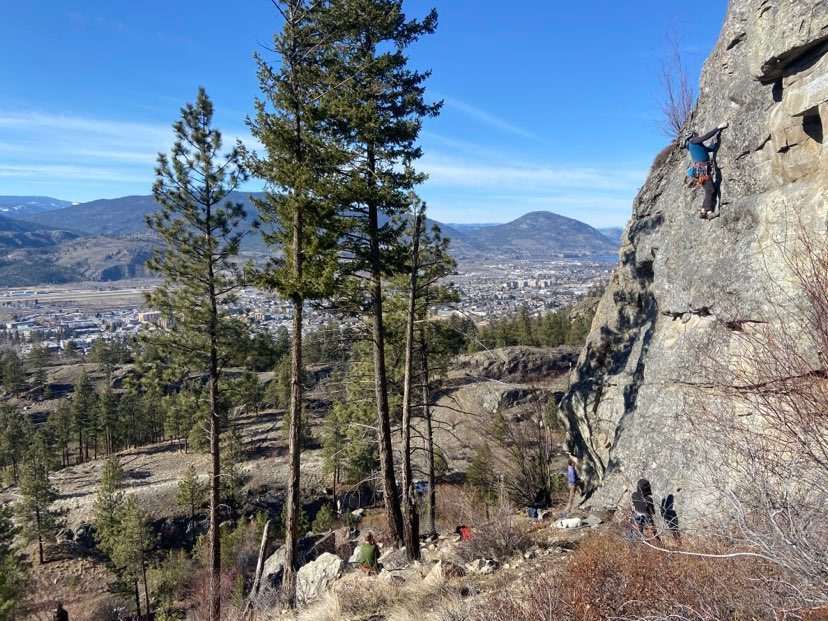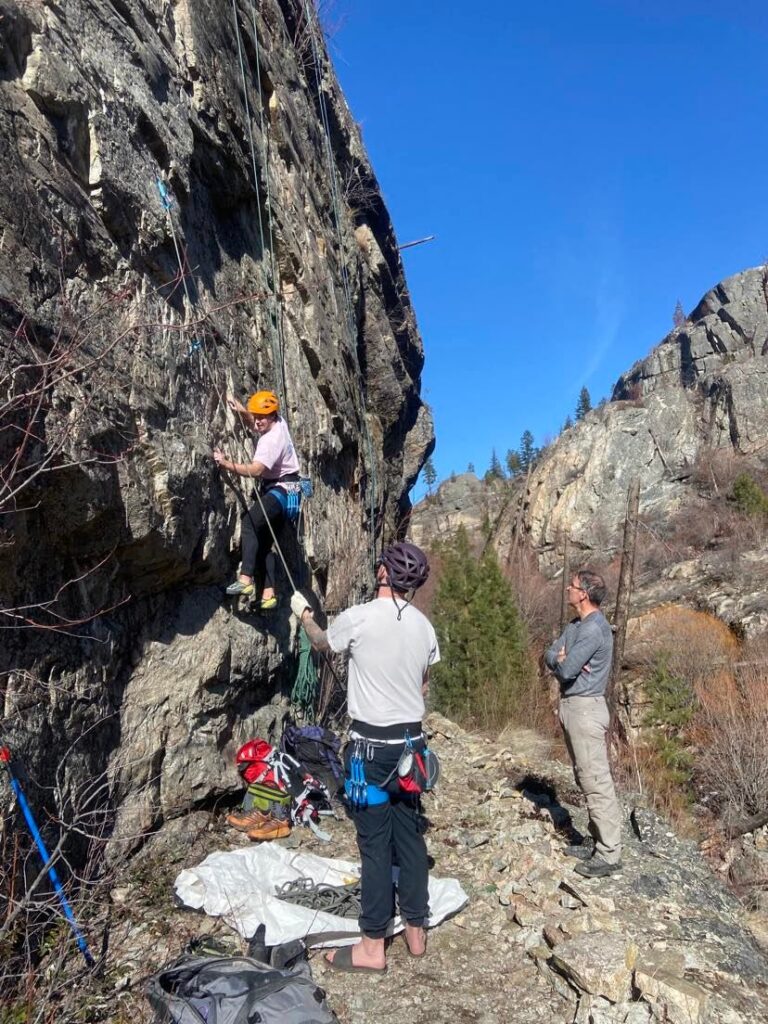Skaha Local Sees Climbers Making Dangerous Mistakes – His Tips to Crag Safety
While there's no way to completely remove the danger from rock climbing, there are steps you can take to improve your chances of a successful no-injury day. These tips apply to all crag climbers no matter where they're visiting

Skaha is one of B.C.’s busiest rock climbing areas, with thousands of climbers visiting every year. One local climber with over 25 years of experience has witnessed countless mistakes that lead to accidents, so he’s sharing some tips on how to stay safe.
Ulysse Richard is from New Brunswick, but moved to western Canada nearly two decades ago. After several months-long stints in the Bugaboos, where he repeated some of the most difficult alpine trad routes, and seasons chasing big mountain ice/mixed climbs in the Rockies, he shifted his focus to hard sport climbing. At many of the world’s most famous crags, Richard has watched some of the best climbers push grades on the sharp-end. His suggestions on how to stay safe will undoubtedly result in better days at the crag.
“I wouldn’t say this is comprehensive but If people did this in general the vast majority of accidents would be avoided,” said Richard. “You could probably add stuff on loose rock, but these things described below are situations that I see on a regular basis.”

Tips to Crag Safety
Stick-clips: Use a stick-clip to clip high enough that you don’t fall onto the belayer or hit the ground. Ground falls from not making it to the first quickdraw can lead to serious injuries. Climbers kicking their belayer in the head from a near factor-one fall is very common. Several routes are established to be climbed with a stick-clipped first bolt. Use a stick-clip.
Be Lowered: There’s no reason to rappel off a sport climb. People need to know how to, but I can’t recall the last time that I had to rappel. Get lowered by your belayer.
How to Clean: Clip direct into the anchor, but stay on belay. Get slack. Thread a bite through the rings or chains first, and then clip into the bite – that way you’re tied into the rope twice. Then untie your original knot and get your belayer to take. If you have to untie because of the anchor set-up, then pull up slack, tie a knot on a bite and clip it to your belay loop using a locking carabiner before untying the original knot. Practice these skills.
Lowering and Redirects: Some traversing routes have fixed chains or quickdraws (Driza-bone 5.10c at Tippling Tower) are often in place to help clean. When tramming in (using a personal quickdraw clipped from your harness to the lowering strand) take a second quickdraw to clip into the the chain or hanger of the fixed quickdraw. Then remove the “lead rope” and exchange it for the “lowering strand.” This is much better than taking an uncontrolled swing into the ground or trees behind.
Unclip Your Tram: People having uncontrolled swings into trees and dragging the belayer because they forgot to remove the tram is all too common. Unclip your tram before removing the first quickdraw above the belayer when cleaning on lower.
Rappelling: One thing that a lot of people seem to screw up is how to rappel, there’s so much sketchy stuff. More than once I’ve just stopped to give a fireman’s belay, as the climbers rappelling weren’t confident and were doing weird things. Several climbers have been injured after lowering off the ends of their ropes. If you have to rappel, tie knots in the ends of the ropes. Be sure to clip both strands before unclipping from the anchor. Triple check your systems.
Ground Anchors: If on a ledge, the belayer should take the tail of the rope to secure themselves to a bolt or tree. If the lead climber is a lot heavier than the belayer, than a ground anchor can prevent the belayer from being dangerously pulled up if the lead climber falls. An alternative is the Ohm from Edelrid.
Don’t Take Lead Off Belay: Before climbing, discuss with your belayer that they are NOT to take you off belay unless explicitly told to do so, which is extremely unlikely to happen if you’re being lowered. As a belayer, if you’re uncertain about what the lead climber is doing at the anchor, then just feed them some extra slack, instead of taking them off belay. The belayer and lead climber should emphasize that being lowered is the best option.
Wear a Helmet: It can save your life.



